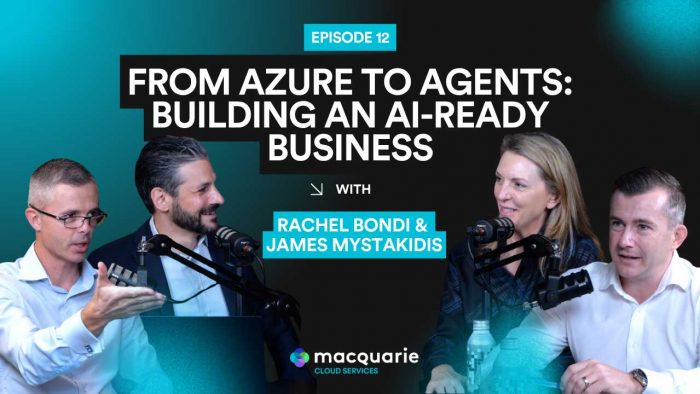Azure Security with Managed SIEM: What Great Service Providers Actually Deliver

Cyber threats have always moved fast, but the AI era has turbocharged the risks due to automation, generative AI, and wide accessibility to offensive tools. Organisations are increasingly online and interconnected via supply chains and wondering where the next attack is coming from, and whether their security operations can keep up.
That’s where SIEM Managed Service Providers (MSPs) come in. If you’re comparing options or just wondering what a managed service provider can actually do with Azure and SIEM, this blog is your plain-English, jargon-free guide. You’ll learn:
- What to look for in an Azure Managed Service Provider (MSP)
- How Azure MSPs differ from your traditional IT MSP model
- Security Services to expect from an Azure MSP
What should I look for when choosing an Azure Managed Service Provider?
Real Security Credentials
You need proof points the MSP has externally validated security credentials and cyber community participation.
- ISO27001 compliance and membership of the ACSC should get the MSP a ticket to the dance.
- Personnel security is often overlooked when assessing MSPs. NV1 clearance for Engineers and SOC staff demonstrates stringent personnel security with background checks, supplemented by internal training and certification programs, management and tooling oversight.
- Membership of the Microsoft Intelligent Security Association (MISA) provides access to exclusive APIs, integration guidance, and co-engineering support. MISA signals that their solutions and services have met Microsoft’s high standards for security, integration, and customer value.
- Azure Expert MSP is the gold standard, ensuring the service provider has Microsoft-validated processes, tooling and follow east privilege management access to the customer Tenant.
How will they secure your Cloud?
SIEM is an important pillar of your security posture, but it isn’t the only thing. Managing the Confidentiality, Integrity and Availability (CIA triad) of your Azure platform requires a trusted and skilled partner. You should explore the MSPs approach to these important adjacent areas:
- Does the MSP have a proven governance model to support your desired security controls and compliance framework(s), including principles of Zero Trust and Least Privilege. It is important to regularly measure progress against controls, analyses outcomes, make data-driven risk decisions and enshrine continuous improvement in Cloud Operations.
- The MSP should be able to meet your wider resilience, BCP and DR needs. Noting the “A” in the CIA triad is Availability, and the omnipresent threat of Cryptolocker attack, can the provider design fit-for-purpose recovery solutions then manage and enact your DR runbook? Do they mitigate the risk of compromised customer accounts by using Multi-User Authorization for privileged Backup operations?
- The MSP should ensure secure configurations, based on Microsoft best practice, Azure product lifecycles and the customers risk profile. Maintaining an evergreen security posture in Cloud requires specialist expertise and a customer-centric context; there is no ‘one size fits all’ approach.
Personal Service and Genuine Partnership.
The best providers work with you, not around you. They build service models that fit how you operate and deliver ongoing guidance—not just a quarterly check-in.
Many businesses require a sovereign SOC, an Australian business employing Australian citizens, with no data leaving our shores. It is important to know who has access to your Data and where your MSP Engineering teams and Security Operations Centres (SOC) are located.
Staff churn in technical roles is a common challenge for Cloud and Security MSPs. Personal service can suffer from team disruption, so we suggest you check your partners average tenure of SOC analysts and Engineers, the onboarding and graduate programs and evidence of staff engagement levels. Happy and engaged MSP staff take pride in their work and customer relationships so look for external validation like Great Place to Work or Gallup Exceptional Workplace awards.
Lastly, one should seek out a managed service which caters for the three tiers of effective Cloud Operations:
- Urgency – sufficient scale and flexibility to ensure problems and requests are logged and actioned quickly, with demonstrable metrics codified in Service Level targets, or even better, Service Level Guarantees.
- Intimacy – expertise and context at the Application, Business Unit and Industry context, supported by named Lead Engineer and Service Delivery Managers.
- Speciality – the Partner should have sufficient depth and breadth for domain expertise across the entire Cloud estate
Azure MSP vs traditional MSP – what’s the difference?
Azure MSPs go beyond “Break/Fix”
Traditional MSPs are built around reactive and planned resource engagement. The modern Azure MSP extends that to incorporate detective, predictive and proactive resource engagement, supported by automation.
The more advanced Azure MSPs will have created a code library of deployment templates to deploy/redeploy Cloud resources in a repeatable manner. Some will have developed a library of Function Apps to monitor and police cloud components, ensuring guardrails are enforced. The aim here is standardised but customisable cloud configurations, simplifying operations and reducing the risk of ‘fat fingers’ moments.
Azure MSPs have an integrated view of Security
Traditional MSPs sell and manage a wide range of security vendors and products, which can lead to a mish-mash of independent point solutions, potentially gold-plating some areas whilst neglecting others. Of course, this product complexity means more management fees for the Traditional MSP!
The modern Azure MSP leverages integrated telemetry between Cloud components, for example Identity, M365 and Azure to provide a holistic view of security and health. Additional point security solutions may still be required, and these can be included in SIEM ingestion, but Azure cloud-native solutions are recommended for their native integration features provided they are fit for purpose.
Azure MSPs consider Compliance as the core
We all have rules we need to abide by, whether it is the Law (e.g. Privacy Act), Regulatory bodies (e.g. APRA), global security standards (e.g. PCI-DSS or ISO27001), chosen frameworks (e.g. Essential 8) or other internal standards the business has agreed.
Your Azure MSP should understand your compliance landscape and work to remove blockers, provide consistency, transparency and genuine partnership to meet your compliance goals. And it’s not just about fixing things once; it’s about monitoring and adapting even as laws (and threats) change.
What security services are typically offered by Azure MSPs?
In addition to day-to-day MSP services like provisioning, monitoring and managing faults, a security focussed MSP will offer a range of value-add services to extend into Cyber Operations, Incident Response and Governance. Services may include:
Managed Detection and Response (MDR)
Round-the-clock monitoring and incident response, using Microsoft Sentinel as the SIEM, with AI-driven detection rules to spot anomalies, insider threats, and advanced persistent threats (APTs) in the ingested logs. Logs can be ingested from just about anywhere, including Operational Technology (OT), branch office infrastructure, your network and multi-cloud sources.
Real-Time Threat Intelligence
The breadth and depth of threat intelligence is critical for hunting and analytics, lowering false positive noise and improving accuracy for true positive detection. Some MSPs subscribe to additional threat intelligence feeds outside Microsoft, incorporating global security vendors, governments and researchers, increasing the quantity and quality of Indicators of Compromise (IoC’s) and therefore the veracity of SIEM analytics for your unique risk profile.
The gold standard are providers who have developed their own LLMs based on historical incident data, to provide SOC operators with timely case information, mitigation steps and MITRE ATT&CK alignment, dramatically lowering the time it takes to respond to an Incident.
Custom Reporting & Dashboards
Some MSPs have developed dashboards and reporting capabilities to demonstrate security posture and operational insights. Features may include:
- Executive dashboards that demonstrate risk reduction, in real time.
- Deeper dive Operational dashboards used by customer IT teams
- Compliance-focused reports for your preferred frameworks (for example ISO 27001, APRA, and more)
- SIEM Cost control tracking, to understand the relative weighting of log ingestion sources and their cost, to determine ROI and avoid end of month bill shock caused by ingestion misconfiguration.
Peace of mind in a zero-trust world
The modern approach to security is trust nothing and verify explicitly. Your MSP should be evolving you to this model, which may include Microsoft solutions such as:
- Enablement and ongoing management of the Microsoft Defender ecosystem (generally subscribed to via M365 E5 plan) which Identity management, endpoint protection, Cloud access, Email and data protection including Data Loss Prevention and Insider Risk Management.
- Using SOAR playbooks to automate aspects of incident response, whether it be mopping up or limiting the blast radius, without requiring human intervention.
- Provide consolidated Vulnerability Management reporting and prioritisation across the entire digital estate. Regular patching of Operating Systems, Applications and Devices is an important part of Cyber operations, as it reduces the risk of known threats being exploited.
- Azure Virtual Desktop (AVD) is a useful and highly scalable solution for standardised, patched and locked down Virtual Desktop hosts in Azure, allowing untrusted devices to access corporate applications safely, thereby providing business flexibility without taking short cuts on security.
Take Security Seriously – or Risk Everything.
Cyber attackers are relentless, pervasive and motivated. Regulatory oversight – and penalties for non-compliance – are tightening. When the stakes are your reputation, revenue, and peace of mind, you can’t afford to “tick-the-box” on Cloud security.
If you want 24×7 protection from an on-shore SOC, powered by Microsoft Sentinel, with real security professionals who know your business, and dashboards that make sense to your Execs—not just your IT team—then it’s time for a SIEM solution that’s up to the job. Want to do more than just hope you’re covered? Get in touch to learn more about our managed SIEM services.





